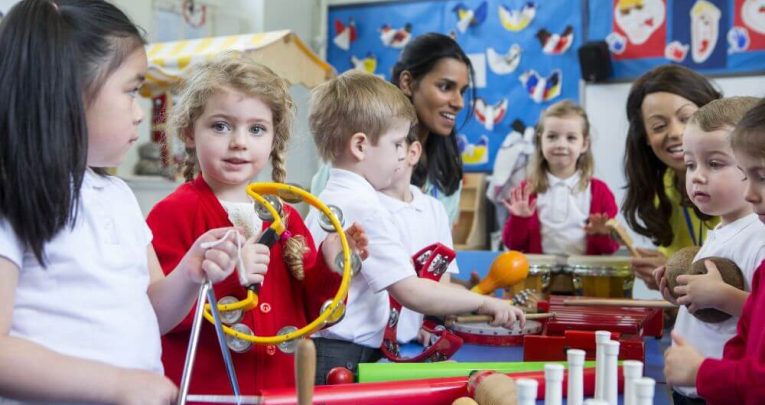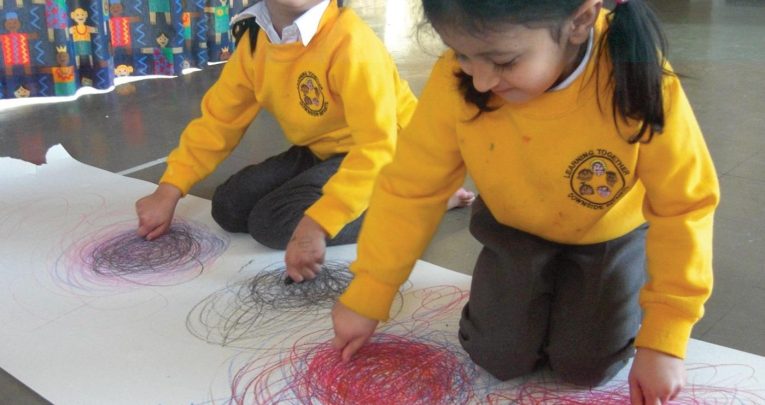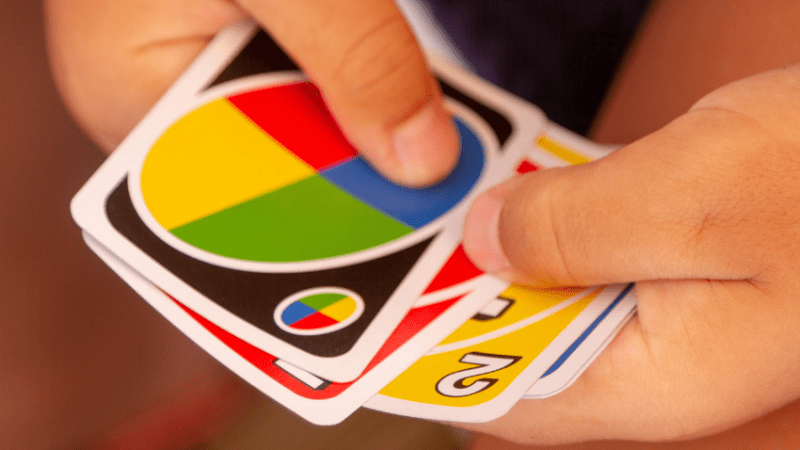Dust Off Your Percussion Trolley And Make Beautiful Music With These Easy Ideas
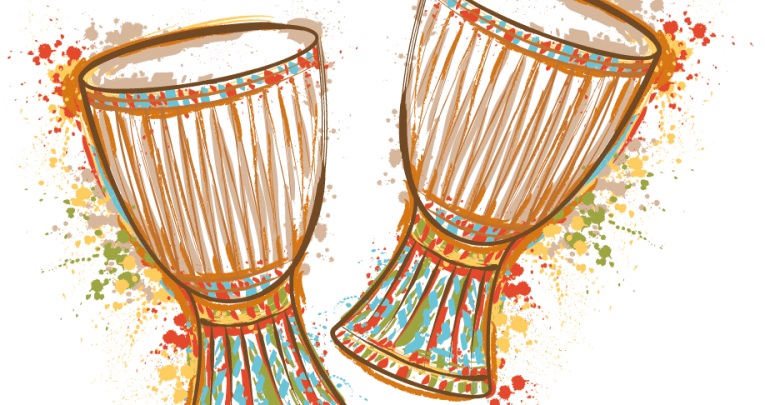
"Don’t fall into the trap of spending your entire music lesson shouting for quiet – you’ll lose your voice before you can silence the cowbell"

- by Ollie Tunmer
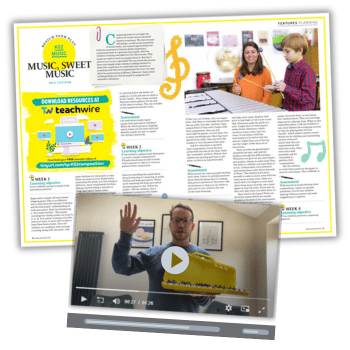
Percussion is exciting and highly accessible. But OK, I admit it, it can be loud. A room full of djembes? Loud. A samba band? Very, very loud.
Don’t fall into the trap of spending your entire music lesson shouting for quiet – you’ll lose your voice before you can silence the cowbell.
Start with a stop
Before a single instrument is picked up, agree a visual signal that means ‘stop’ and practise it with some body percussion and beatboxing. Once pupils demonstrate that they can focus on and respond to the stop signal, then agree that they can move onto using the instruments.
Get imaginative
Sure, you can scrape a guiro. But you can hit it too. That snare drum sounds great with sticks, but what about the extra potential that is unleashed when using brushes? Encourage students to explore the different ways in which an instrument can be used. Try hitting the drum in different locations, exploring rim shots and muting. With a few different percussion playing methods established, the musical range of an instrument can be dramatically enhanced.
Of course, it’s important that you lead by example. Demonstrate the potential of instruments and the different effect this has. You don’t need to be a professional percussionist to do this – you just need a creative approach. If you are doing it, then it won’t be long before the children are coming up with whole new ways to play their chosen instrument.
Think visually
It’s easy to forget that music is a highly visual medium. The advent of recorded music did a lot to separate the sound from the visual, but we still go to ‘see’ a concert. This is often even more true when it comes to percussion. Just look at the intricate physical and visual nature of taiko drumming, as an example. Every single note can be seen as well as heard. Getting pupils to think about this element has the added bonus of encouraging them to concentrate on their performance and interpretation.
Sound of silence
Sometimes it’s the beats that you don’t play that have the most impact. It’s one thing to try a syncopated rhythm, but you can easily take this further by leaving out a note, strike or beat that seems integral to the piece. This plays with the listeners’ (and performers’) expectations and ensures that everyone pays 100% attention.
It’s also incredibly effective to throw in a rest that is the same length as the overall phrase that you are learning. This encourages internalisation of the music being learnt and, in turn, improves the quality of performance.
Try rhythmonics
Creating a verbal phrase that sounds like the rhythm you’re trying to learn makes the rhythm more memorable. This is called a ‘rhythmonic’ (rhythm + mnemonic) and is indispensable as a teaching and learning aid, as well as a compositional tool. During a four week samba project at Woodcroft Primary in North London, pupils learnt traditional rhythms and the names of seven instruments before composing their own samba ‘breaks’ using this approach – quite an achievement!
Added extras
Ensemble music-making frequently provides a platform for the development of other, non music specific skills. The ‘mestre’ (leader) of a samba band has to develop communication and leadership skills. Training young people as leaders can allow them to take ownership of their learning. A ‘surdo’ (bass drum) player may be required to play a pulse-based rhythm which, although simple, is of huge importance to the overall sound of the band, providing a sense of responsibility for the student involved.
Broader appeal
One element that often provokes interest (and, at times, trepidation) is the linking of music with other curriculum areas. An increase in the awareness of the links between musical involvement and academic achievement means that teachers are exploring creative approaches for all subjects, despite the merciless obsession with test results from certain strands of society. We’ve worked with literacy guru Pie Corbett, taking his ingenious storytelling and poetry methods down a body percussion route.
We’ve also incorporated the work of Keith Terry of Crosspulse into our sessions. Keith has developed a brilliant way of teaching numeracy through percussion. This kinaesthetic approach completely revolutionises a typical maths lesson and covers a full range of learning styles, allowing all children to access material in new, creative ways. It takes a bold, courageous (and well supported) school or teacher to break away from ‘normal’ teaching styles, but the results can be life changing.
Start lessons with a bang
Specialist music teachers have long known the value of body percussion. It’s music that you can make anywhere and with anything. However, this also makes it an exciting tool for non-musicians to use in their lessons. These starter activity ideas will allow you to make music with your class so that you can deliver the learning objectives of any subject.
Call and response
Last lesson of a rainy day? Sleepy students after a school trip? Start your lesson with an energiser to wake everyone up and get the children ready to learn. Clap and stomp a rhythm to your class and get them to copy it back to you. Be fussy about the pupils being accurate with the rhythm and keeping a steady pulse. This will focus their minds. You could also turn the rhythm into a chant. This is an opportunity to create your own mnemonics for facts and keywords.
Improve coordination
Develop students’ coordination or teach them about the importance of concentration with a rhythm game. Many involve teamwork and cooperation and can be great team-building activities. Stand in a circle facing inwards and start a chant of, “Slap, clap… slap, clap… point”, high-fiving the people next to you on ‘slap’ and pointing into the centre of the circle on the last word. See my video here.
Percussion grooves
Body percussion isn’t the only way to create an exciting groove without instruments. Your classroom is likely to be filled with all manner of objects that could be used as music-making resources. The ‘cups’ song from the film Pitch Perfect is popular with children of all ages and makes a great starting point. Just be sure to consider the health and safety implications, make sure important curriculum resources don’t get broken and ensure no one uses the windows as a drum! Watch me trying it out here:
Box fresh
Turning key learning points into a rap is a common teaching technique. The rhythmic focus makes it easier for pupils to recall the information when they need it. The trouble is that there’s something very inauthentic about a rap without a backing track. Why not add some beatboxing to the equation? You’ll very quickly have an authentic sounding rap that engages pupils and helps everyone to learn the key concepts. Don’t settle for poor-quality beatboxing – the pupils will see straight through it. Get free tutorial videos from professional beatboxer Shlomo here.
Ollie Tunmer is director of Beat Goes On and specialises in delivering percussion workshops to schools, CPD courses and keynote presentations. He is a former cast member of STOMP and a qualified music teacher. Find out more at beatgoeson.co.uk and on Twitter at @BeatGoesOnUK.






